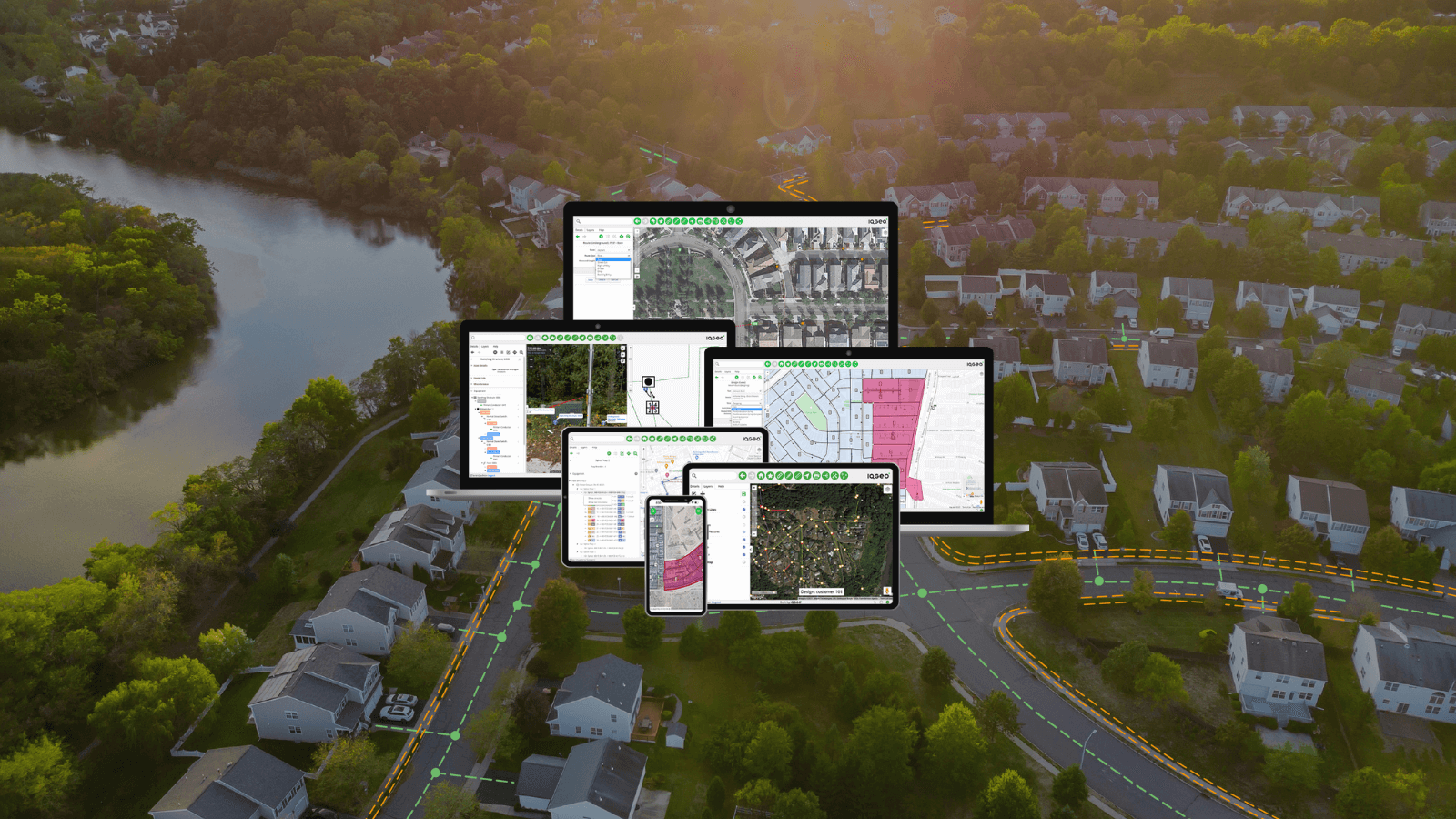Bitesize Fiber: Network construction | Episode 2: Permitting without the paper chase
Welcome to Bitesize Fiber, the podcast where we explore the real world challenges and smart solutions shaping the future of fiber and telecom, one bite at a time.
In episode 2 of Bitesize Fiber: Network construction series, Elli Puls teams up with industry pros Greg Ross and Stefan Schneider to tackle one of fiber’s biggest pain points—permitting. From paper-based chaos to digital transformation, discover how smart tools are keeping builds on track and headaches at bay. Tune in for some bite-sized wisdom.
Bitesize Fiber: Network construction | Episode 2 transcript
Ellie Puls:
Welcome back to Bitesize Fiber, the podcast where we unpack the biggest telecom and fiber challenges one bite at a time. I'm your host, Elli Puls, and in episode two of our Network construction management series, we're getting into one of the most frustrating but crucial parts of any build, permitting.
Today I'm joined by Greg Ross, a veteran of fiber construction with more than three decades of real world experience., and Stefan Schneider, who spent his career bridging the gap between field operations and digital tools. We're talking about how permitting can quickly spiral into chaos when it's paper based and disconnected, and how operators are using digital tools to streamline approvals, track statuses, and keep construction moving without the headaches. Let's get into it.

|

|

|
| Ellie Puls, Product Manager | Greg Ross, Customer Success Manager | Stefan Schneider, Product Manager |
Ellie Puls:
What are some of the other challenges of permitting that you guys have run into?
Greg Ross:
The number one thing with permitting is if your project is a large project or a small project, smaller projects don't really have as many permits involved with those, but if you have a customer that's going to go out and do an an overall upgrade.
Let's say, for example, a telco company would go out and do an entire wire center that could be anywhere from 50 miles to 300 miles. Permitting agencies only allow you to submit a certain size permits. In a wire center that you had maybe 100 miles, you could probably end up with 1,000, maybe 1,500 permits, depending on the size of the permit. So, the very important part of that is organizing and tracking your permits, obviously.
Well, what we found out in Network Manager is that we can use a feature called the Permit Polygon, we were actually able to draw polygons around the build area that encompassed the permit which we submitted to the agency. And we could track that with a unique identifier and we could look it up, and we could change the status on a particular permit. What we first did was we created a new permit. Then once you submit that permit, you change that status to a yellow color for a status and then, that lets all the construction guys know because they can see that live while they're in the office so they can get a gauge on when the permit was submitted and then when it was approved. So once a permit gets submitted and then we approve the permit after that, we turn that polygon green and we change the status to approved, and at that time, we upload the approved permit to that particular polygon in Network Manager.
Therefore, on a big area, it lets the construction folks know that they have a continuity of approved permits along a certain feeder run like an F1 feeder run that could go 20,000 feet. They have the continuity of all the permits being approved by all of the statuses being green. So therefore, it lets them from a planning aspect see where they can go and have all the approved permits and they can download the permits out of the permit polygon field, and then they'll have all them in their truck, and then they can do their forecasting for that. Like I said before, it lets them have a copy of the permit in the field so that if an agency pulls up on them while they're actually doing the work, then they have that documentation on hand.
Ellie Puls:
That's super cool. Have you guys ever seen anything like this or is this kind of one of the first of its kind of this type of capability?
Greg Ross:
This is the first time that we've actually had a software that I've used to where, you can keep it up to date, it's real mobile in the field., we didn't really have any issues with connectivity. I mean, as long as you have an LTE or a 5G connection in the field, and obviously if you're able to have a Wi-Fi, that's ideal. Most of the time when we were in the field and I personally tested that, I didn't really have a connection issue at all.
So, with that new capability of doing that, being able to see the approved permits in real time, and to have the permit approved to the permit polygon, it streamlines the permitting process because you can't complete construction without the permits. So like I said before, they go hand in hand. You need the most current construction drawing and you need the approved permit for that particular area. So, this was the first time that I had both of them readily available to me on a particular job.
Stefan Schneider:
Yeah, it is a fairly new technology and it's a fairly new approach to managing your permit documentation. Before IQGeo, I haven't seen anyone do this in the field. Everyone that I ever dealt with that dealt with permitting had a massive folio worth of printed permits, amendments done in marker and red pen. A bunch of construction prints with a lot of red lines done on the fly. Maybe they would have a laptop with some pre-permitting or building documentation that they had to search through. But it was very chaotic for the person in the field just to find and manage all that information. Documents flying, whoops, I forgot this on the truck and the trucks like two miles down the road, I used to see all kinds of stuff.
Ellie Puls:
Yeah, that sounds so chaotic. It's almost hard to imagine now in the digital age that paper is still so used.
Tune in to the next episode of the network construction series: Building without the bottlenecks or catch up on the Bitesize Fiber series.
Ready to eliminate delays in your fiber network construction?
IQGeo helps telecom operators streamline every stage of the build process—from permitting to materials management and real-time approvals. Get in touch with our experts to see how our solutions can keep your project on track and under budget.
Similar articles:


 Previous
Previous







